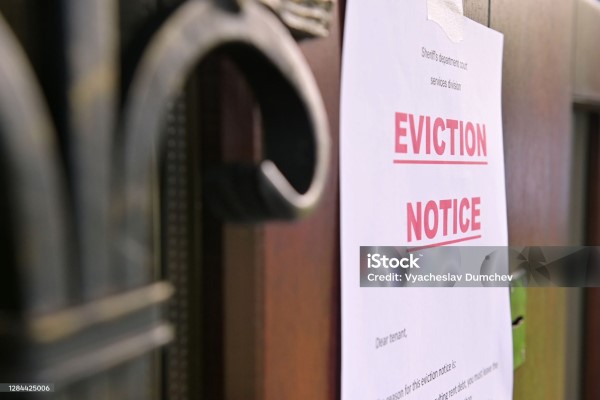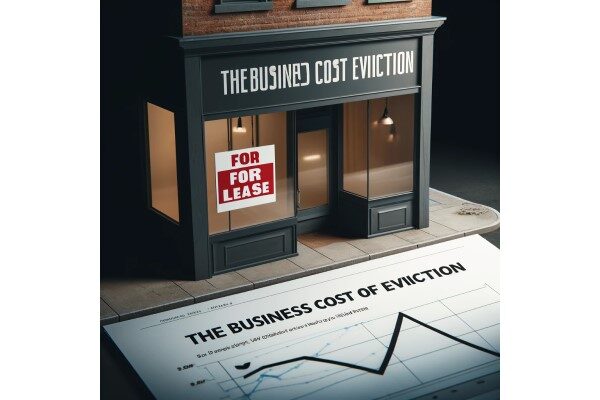The Business Cost of Eviction: A No-Win Game?
The business cost of eviction varies, from the court costs, to damage costs. Also you have to figure in how long the eviction process takes in your area.
Introduction Eviction is the dark underbelly of the rental housing market—a complex, often heart-wrenching process for all parties involved. Yet, in the shadow of lost keys and packed boxes, there lies a significant financial narrative that’s crucial for both landlords and tenants to understand. Here, we unpack the true business cost of eviction, blending essential data with a sprinkle of humor to keep things in perspective. After all, who says you can’t find a silver lining in a court summons?
Understanding the National Eviction Landscape
- Annual Eviction Rates: Surprisingly, less than 3% of rental properties enter the eviction process annually. However, this small percentage affects millions of lives and involves substantial financial implications for property owners.
- The Financial Toll: Evicting a tenant isn’t as simple as changing the locks. From court fees and lost rents to property damage and turnover costs, landlords often find the price steep. On average, an eviction can cost anywhere from $3,500 to $10,000 depending on the location and circumstances.
- Long-term Impact: For tenants, an eviction is more than just a temporary setback. This black mark can stay on a credit report for up to seven years, making it challenging to secure housing and affecting credit health long-term.
Economic Ripple Effects of Eviction
- Direct Costs: Court costs and legal fees are just the tip of the iceberg. Landlords also face potential property damage and the inevitable vacancy period while they search for new tenants.
- Example: Imagine you’re a landlord dealing with an eviction. Not only do you pay $400 for court filings, but you also lose two months of rent (say $1,200/month) and spend $800 in repairs. That’s a $3,600 hit, not including your time and stress.
- Indirect Costs: The less obvious costs include the administrative burden of processing an eviction, potential reputation damage if the eviction process becomes public, and the emotional toll on both parties involved.
- Example: Consider the impact on your property’s reputation. If word gets out that evictions are frequent, potential tenants might think twice, possibly leading to longer vacancy periods.

Recovery Strategies: Getting Back on Track
- Recouping Lost Rents: There are legal avenues to pursue unpaid rents, but they require time and money. Some landlords turn to collection agencies, while others may opt for payment plans to recover funds.
- Example: After an eviction, a landlord might contract a collection agency to pursue the outstanding $2,400 in unpaid rent, which could still net about 50-60% of that after fees.
- Preventive Measures: To minimize the chances and costs of eviction, thorough tenant screening, prompt communication, and clear lease agreements are essential. Preventive maintenance of the property also keeps it in top condition, reducing the risk of disputes.
- Example: A robust tenant screening process that includes credit checks, reference checks, and employment verification can act as the first line of defense against future evictions.

Conclusion Navigating the eviction process is a tricky part of property management that can seem both financially draining and personally challenging. It’s a balancing act that requires a thoughtful approach to tenant relationships and diligent financial planning. Remember, a successful landlord isn’t the one who evicts the most; rather, it’s the one who evicts the least. By understanding the business costs associated with eviction and implementing strategic preventive measures, landlords can protect their investments and foster a more stable rental environment.
For tenants, understanding the gravity of an eviction and maintaining open lines of communication with landlords can help avoid the financial upheaval and long-term credit damage that follow. After all, in the game of rentals, both landlords and tenants play on the same board—ideally not as adversaries, but as collaborators aiming for a win-win scenario.
Share this article to help spread awareness about the true costs of eviction and strategies for prevention, ensuring a healthier rental market for everyone involved!
About this site
I created this website so that people who work for the property management company I work for could write blogs. Simple enough. It is built with WordPress, which so many great options and configurations that make blog writing for very productive. However, while it’s relatively easy to wrote a blog, even set up a site to do so, not everyone is capable of writing articles. All that time and money spent and the site went un-used. So, since this costs me money anyway, I’m repurposing it.
About the author – What I know about rental insurance in California
I have been in actual property management since 2015. Before that I worked for insurance companies executing property inspections. I performed maybe 1000 of these inspections, exterior inspection making the bulk of that, interior and exterior being the balance. Prior to that I worked performing BPOs, gathering data for Broker Price Opinions. Additionally I did REO inspections, clean ups, yard care, you name it.
Check us and read more as we create articles at rentalinfo.today!


